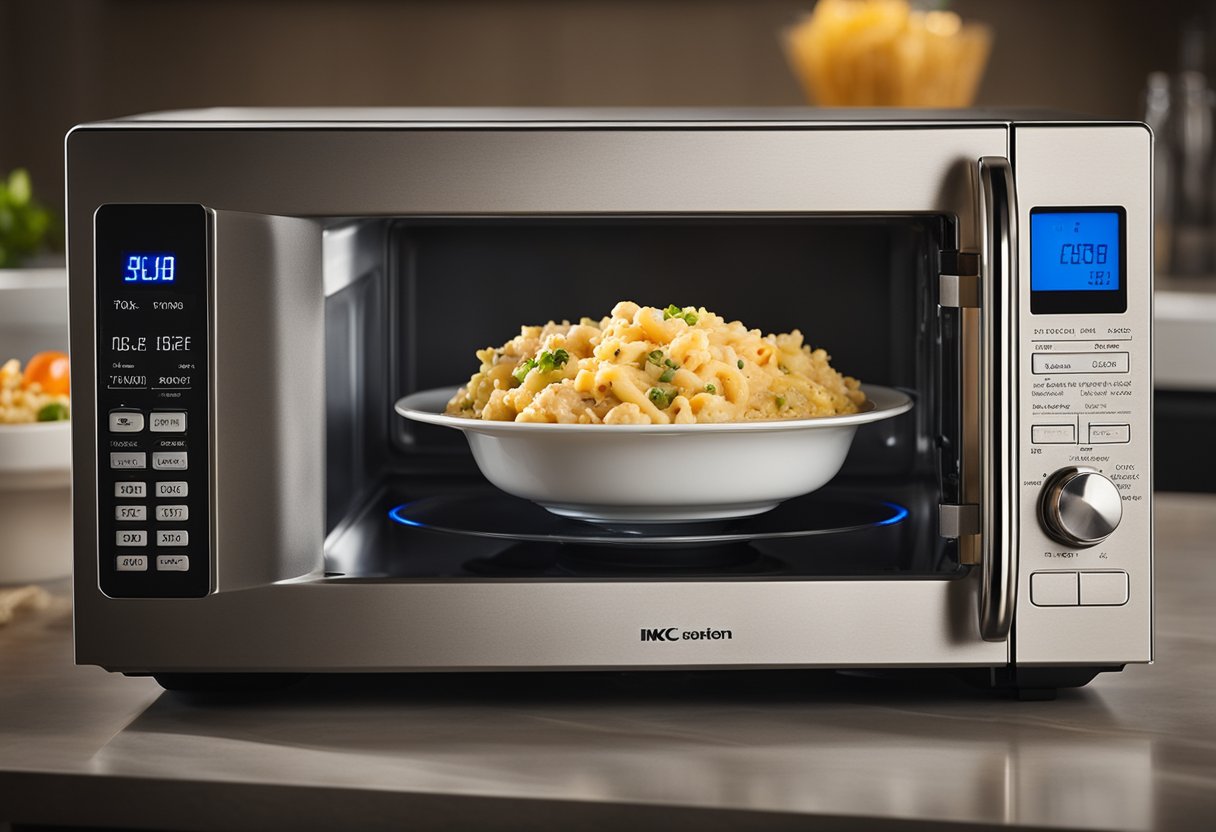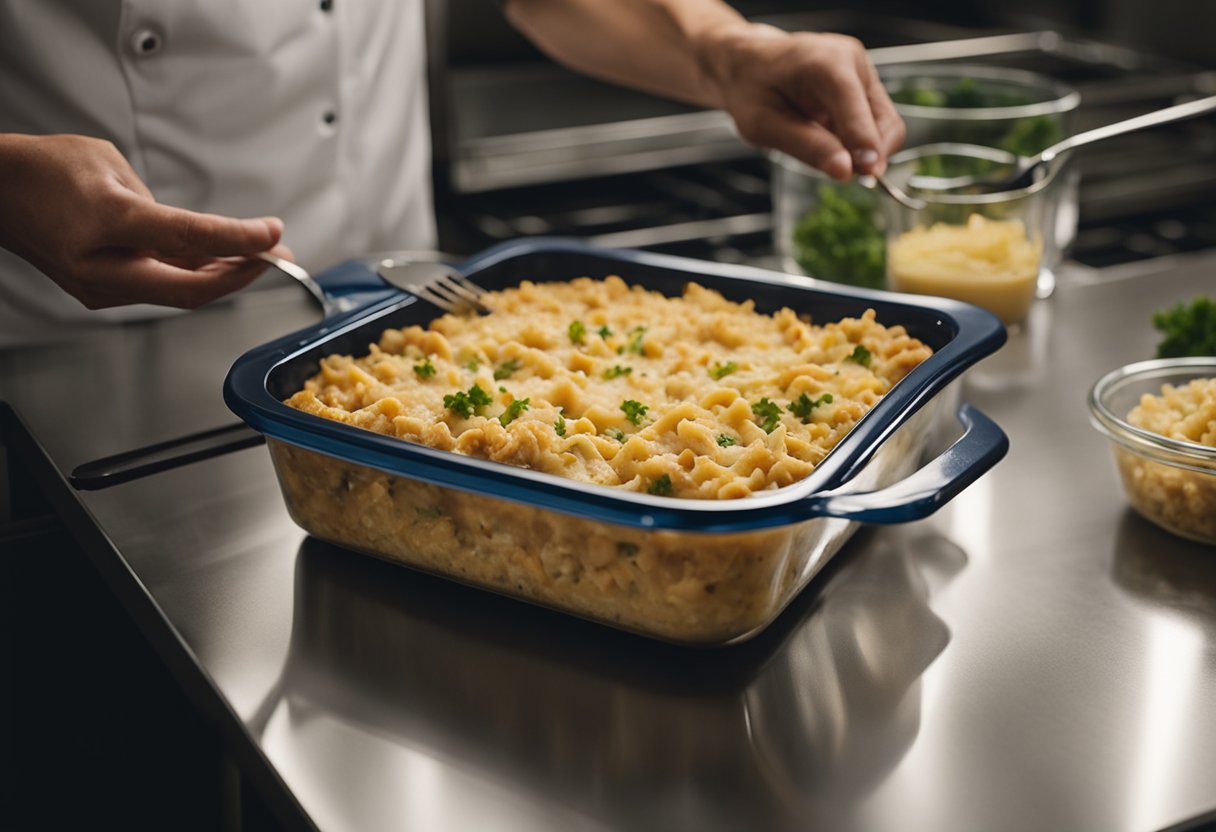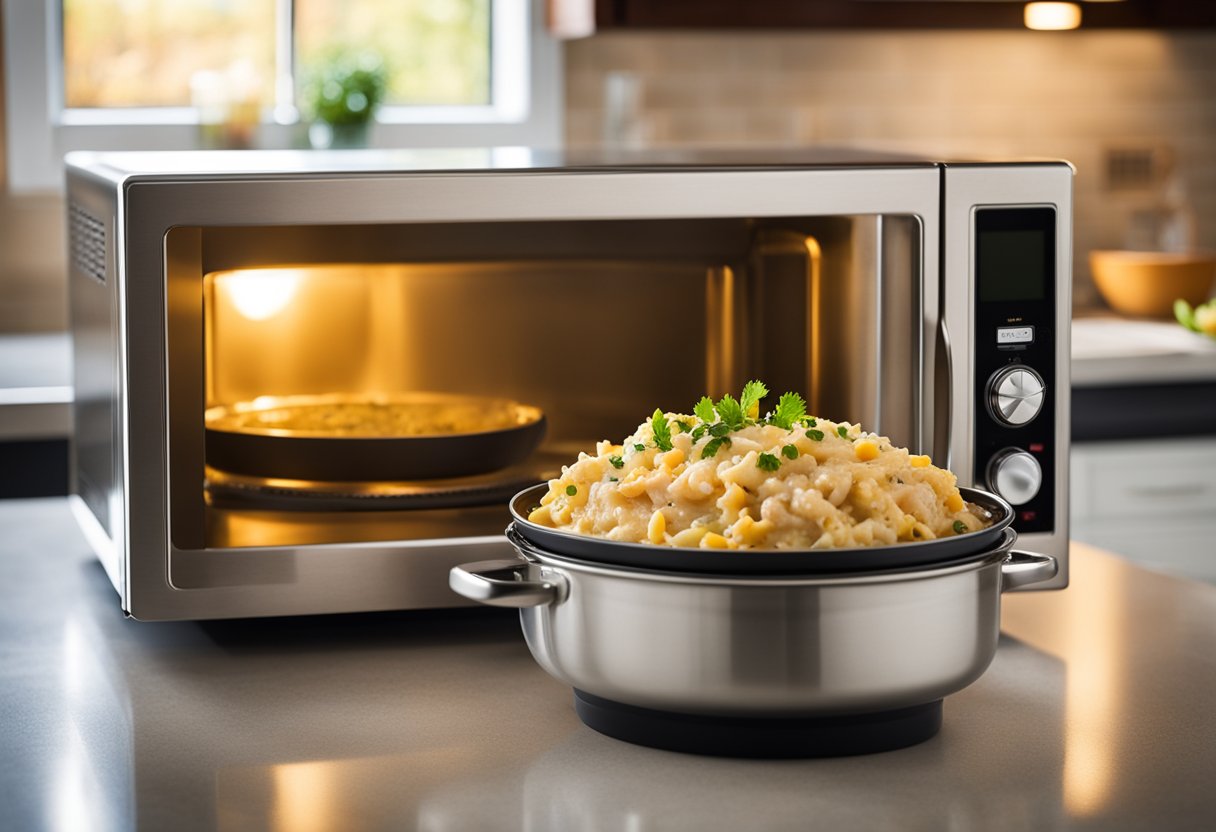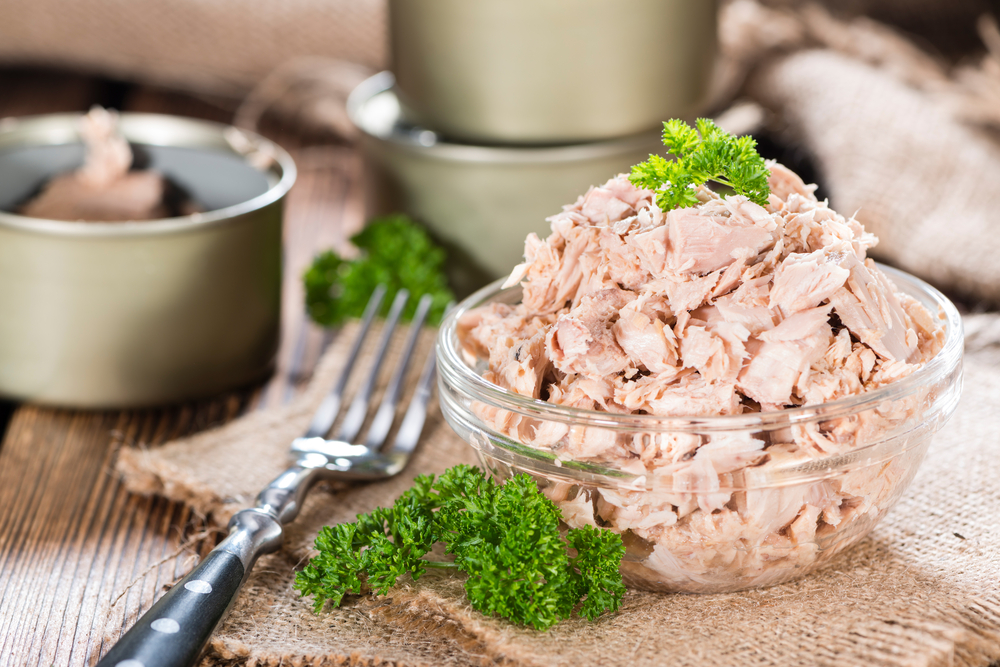Reheating tuna casserole is a great way to enjoy leftover comfort food. However, if not done correctly, it can lead to a soggy or dried-out dish.
As someone who loves to cook and hates wasting food, I’ve experimented with different methods to reheat tuna casserole. In this article, I will share with you the best ways to reheat tuna casserole so that it tastes just as good as the first time.

Before reheating tuna casserole, it’s important to prepare it properly. This includes storing it in an airtight container in the fridge or freezer and allowing it to thaw if frozen.
When reheating tuna casserole, there are various methods to choose from, including the oven, microwave, stovetop, Instant Pot, and air fryer.
Each method has its pros and cons, and the best one for you depends on your personal preference and the equipment you have available.
Key Takeaways
- Properly preparing tuna casserole for reheating is crucial for a delicious result.
- There are various methods to reheat tuna casserole, including the oven, microwave, stovetop, Instant Pot, and air fryer.
- The best reheating method for you depends on your personal preference and the equipment you have available.
Preparing Tuna Casserole for Reheating
When it comes to reheating tuna casserole, there are a few things to keep in mind. Proper preparation is key to ensuring that your casserole is heated evenly and tastes just as delicious as the first time around.
Here are some tips on how to prepare your tuna casserole for reheating.
Assessing Leftover Casserole
Before reheating your tuna casserole, it’s important to assess the state of your leftovers. If your casserole has been sitting in the fridge for a few days, it may have dried out or lost some of its moisture.
In this case, you may want to add a bit of liquid to your casserole before reheating it. Adding a bit of broth or cream can help to restore some of the moisture to your casserole and prevent it from drying out during the reheating process.
Preheat the Oven
If you’re using an oven to reheat your tuna casserole, it’s important to preheat your oven to the right temperature.
Most recipes recommend preheating your oven to 350°F (175°C) for reheating tuna casserole. This temperature ensures even heating without overcooking any part of your casserole.
Once your oven is preheated, transfer your leftover tuna casserole into an oven-safe baking dish. Ensure that it is spread evenly for consistent reheating. Cover your casserole with aluminum foil to prevent it from drying out and to ensure that it heats evenly.
By following these simple steps, you can ensure that your tuna casserole is properly prepared for reheating in the oven.
Reheating Tuna Casserole in the Oven
When reheating tuna casserole, the oven is one of the best methods to achieve a crispy and evenly heated dish.
Here are the steps I follow to reheat tuna casserole in the oven.
Covering with Foil
Before reheating your tuna casserole in the oven, make sure to take it out of the fridge and allow it to come to room temperature for about 30 minutes. This will help ensure that the casserole heats evenly.
Next, preheat your oven to 350°F (175°C). This temperature ensures even heating without overcooking any part of your casserole.
Carefully transfer your leftover tuna casserole into an oven-safe baking dish. Ensure that it is spread evenly for consistent reheating. Then, cover the dish with foil to prevent the top from burning and to keep the casserole moist.
Baking to Perfect Temperature
Place the covered baking dish with the tuna casserole in the preheated oven and bake for about 20-25 minutes. After 20 minutes, remove the foil and continue baking for another 5-10 minutes or until the casserole is bubbly and golden brown.
To ensure that the casserole is evenly heated, use a food thermometer to check the internal temperature. The casserole should reach an internal temperature of 165°F (74°C) to be safe to eat.
Once the casserole has reached the perfect temperature, remove it from the oven and let it cool for a few minutes before serving.
Reheating tuna casserole in the oven is a simple and effective way to enjoy your leftovers. Just remember to cover the dish with foil and bake it to the perfect temperature for a delicious meal.
Microwave Reheating Method
When it comes to reheating tuna casserole quickly, using a microwave is a good option. However, you need to be careful not to overcook the dish, which can result in a dry and rubbery texture.
Using Microwave-Safe Dish
To reheat tuna casserole in the microwave, you will need a microwave-safe dish. Avoid using plastic containers that are not microwave-safe, as they may melt and release harmful chemicals into the food.
I recommend using a glass or ceramic dish that is labeled as microwave-safe. These materials are less likely to overheat in the microwave and will not leach chemicals into your food.
Adding Moisture for Microwave Reheating
One of the challenges of reheating tuna casserole in the microwave is that it can dry out quickly. To prevent this, you can add a splash of milk to the dish before reheating.
The milk will help to keep the casserole moist and prevent it from becoming dry and rubbery. Simply pour a small amount of milk over the top of the casserole and cover it with a microwave-safe lid or plastic wrap.
When reheating the tuna casserole in the microwave, start with short intervals of 1-2 minutes. Check the dish after each interval to see if it is heated through. If not, continue reheating in 30-second intervals until it is hot all the way through.
Overall, reheating tuna casserole in the microwave is a quick and convenient option. However, it is important to be careful not to overcook the dish and to add moisture to prevent it from becoming dry.
Alternative Reheating Techniques
If you don’t have access to an oven or a microwave, you can still reheat your tuna casserole using alternative methods.
Here are two techniques that you can try:
Stovetop Reheating
One of the easiest ways to reheat your tuna casserole is on the stovetop. To do this, you’ll need a large, deep skillet or saucepan.
Here’s how to do it:
- Place your tuna casserole in the skillet or saucepan.
- Turn the heat to medium-low and cover the skillet with a lid.
- Cook the tuna casserole for 10-15 minutes, stirring occasionally, until it’s heated through.
The stovetop method is great if you want to reheat individual servings of tuna casserole. It’s also a good option if you want to avoid drying out your casserole, as it allows for even heating.
Using a Skillet
Another option is to reheat your tuna casserole using a skillet. This method is similar to stovetop reheating, but it allows you to sauté the casserole for a crispy texture. Here’s how to do it:
- Place your tuna casserole in the skillet.
- Turn the heat to medium and add a tablespoon of oil or butter.
- Cook the casserole for 10-15 minutes, stirring occasionally, until it’s heated through and crispy on the outside.
Using a skillet is a good option if you want to add a little extra texture to your reheated tuna casserole. Just be sure to keep an eye on it, as it can burn quickly.
No matter which method you choose, make sure to keep an eye on your tuna casserole as it reheats. This will ensure that it’s heated through evenly and doesn’t dry out.
Storing and Freezing Tuna Casserole

As someone who loves to meal prep, I know how important it is to store food properly to keep it fresh and safe to eat.
Tuna casserole is a delicious and easy dish to make, but it’s important to store it properly to maintain its freshness. Here are some tips for storing and freezing tuna casserole.
Proper Storage for Freshness
When it comes to storing leftover tuna casserole in the fridge, make sure to transfer it to an airtight container or cover it tightly with plastic wrap or aluminum foil. This will prevent air from getting in and keep the casserole fresh for up to 3-4 days.
If you want to store the tuna casserole for a longer period, you can freeze it. Before freezing, make sure the casserole has cooled down completely.
Divide the casserole into portions and store them in separate airtight containers or wrap them tightly with plastic wrap or aluminum foil. Label the containers with the date and contents so you can keep track of what you have in the freezer.
Freezing and Defrosting Tips
When it comes to freezing tuna casserole, there are a few things to keep in mind. First, make sure to freeze the casserole as soon as possible after it has cooled down. This will prevent bacteria from growing and keep the casserole fresh.
Second, when you’re ready to eat the frozen tuna casserole, make sure to defrost it properly. The best way to defrost tuna casserole is to transfer it from the freezer to the fridge the night before you plan to eat it. This will allow it to defrost slowly and evenly.
If you’re short on time, you can defrost the tuna casserole in the microwave. Make sure to use the defrost setting and stir the casserole every few minutes to ensure it defrosts evenly. Once the casserole has defrosted, you can reheat it in the microwave or oven.
In summary, storing and freezing tuna casserole is easy if you follow these tips. Proper storage will keep the casserole fresh for days, and freezing it will allow you to enjoy it later. Just make sure to defrost it properly before reheating.
Frequently Asked Questions

What is the best temperature to reheat a casserole in the oven?
The best temperature to reheat a casserole in the oven is 350°F (175°C) [1]. This temperature ensures even heating without overcooking any part of your casserole.
Can you safely reheat a tuna pasta bake?
Yes, you can safely reheat a tuna pasta bake. However, it is important to store and reheat it properly to avoid foodborne illnesses.
You should refrigerate it within two hours of cooking and consume it within three days. If you want to extend its shelf life, you can freeze it for up to three months [1].
How do you reheat a casserole in the microwave without drying it out?
To reheat a casserole in the microwave without drying it out, cover it with a damp paper towel or microwave-safe lid to trap the moisture. You can also add a tablespoon of water or chicken broth to the casserole to keep it moist [2].
Is it safe to eat tuna casserole the following day?
Yes, it is safe to eat tuna casserole the following day if it has been stored properly in the fridge. You should refrigerate it within two hours of cooking and consume it within three days. If you want to extend its shelf life, you can freeze it for up to three months [1].
What are the steps to reheat a frozen tuna casserole in the oven?
To reheat a frozen tuna casserole in the oven, first, preheat the oven to 350°F (175°C). Then, remove the casserole from the freezer and let it thaw in the fridge overnight.
Once thawed, place the casserole in an oven-safe dish and cover it with aluminum foil. Bake for 30-40 minutes or until the casserole is heated through [1].
How can you reheat a chicken casserole to maintain its moisture?
To reheat a chicken casserole to maintain its moisture, cover it with aluminum foil or a lid to trap the moisture.
You can also add a tablespoon of chicken broth or water to the casserole to keep it moist. Reheat it in the oven at 350°F (175°C) until it is heated through [2].







